Understanding Kyphosis: Causes, Symptoms, and Treatment Options
Learn more about kyphosis, a spinal disorder characterized by an exaggerated curve of the upper back. Discover the causes, symptoms, and treatment options available for managing this condition.
Hey there! Kyphosis is a spinal disorder that is characterized by an exaggerated curve of the upper back. Don't worry, it's also known as roundback or hunchback. This condition is most commonly seen in adolescents and can cause issues if it progresses.
Generally, it's not a cause for concern and goes unnoticed. Sometimes, a back brace or exercises are prescribed to help improve posture and strengthen the spine. However, in severe cases, kyphosis can negatively affect breathing and cause significant spinal deformity and pain. Surgery is needed to help reduce the excessive spinal curve and improve the patient's condition.
Anatomy
The spine has three segments that form gentle curves when viewed from the side: the C-shaped curves of the neck (cervical spine) and lower back (lumbar spine) are known as lordosis and the reverse C-shaped curve of the chest (thoracic spine) is called kyphosis. This natural curvature of the spine is important in keeping balance and helps us stand upright. If the curves become too large or small, standing up straight can be challenging and our posture looks abnormal.
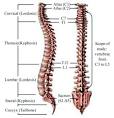
Kyphosis occurs when the thoracic spine's natural kyphosis (20 to 45 degrees) becomes extreme due to structural or postural abnormalities.
Description
The condition is termed hyperkyphosis when a curve greater than the standard is present. The medical condition excessive curvature in the thoracic spine that leads to a rounded upper back is referred to as kyphosis in everyday language. Kyphosis comes in different forms and can range in severity from mild back pain to significant spinal deformity with a visible hump on the patient's back.
Types of Kyphosis
Kyphosis takes several forms, but three types mainly affect children and adolescents:
- Postural kyphosis
- Scheuermann's kyphosis
- Congenital kyphosis
Postural Kyphosis
Postural kyphosis is the most frequent kyphosis and is often noted during adolescence. It is characterized by poor posture or slouching but lacks severe structural abnormalities of the spine.
The curve caused by postural kyphosis is usually round and smooth and can often be corrected when the patient stands up straight.
Postural kyphosis is uncommon in boys and rarely painful and does not usually result in problems in adult life.
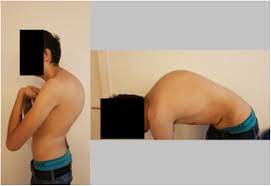
Scheuermann's Kyphosis
Scheuermann's kyphosis got its name from the Danish radiologist who first identified the condition.
Scheuermann's kyphosis is often noted in teens and can produce a more serious deformity than postural kyphosis.
A structural abnormality in the spine creates Scheuermann's kyphosis. In a patient with Scheuermann's kyphosis, an X-ray from the side reveals that three or more consecutive vertebrae have a more triangular shape than the normal rectangular shape of vertebral wedging. This shape's irregularity causes wedging of the vertebrae towards the front of the spine, narrowing the normal disk space and creating an exaggerated forward curve in the upper back.
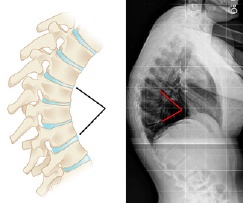
The curve created by Scheuermann's kyphosis is typically sharp and angular and is also stiff and rigid. A patient with Scheuermann's kyphosis, unlike a patient with postural kyphosis, cannot adjust the curve by standing up straight.
Although Scheuermann's kyphosis usually affects the thoracic spine, it can occasionally occur in the lumbar spine. It is more common in boys than girls and ceases progressing once growth is complete.
Patients with Scheuermann's kyphosis can suffer from severe back pain occasionally. Pain is typically felt at the most prominent part or apex of the curve in the case of existence. The lower back may also cause pain when the spine attempts to adjust to the upper back's curve by increasing the lower back's natural inward curve. Long periods of standing or sitting or physical activity can make the pain worse.

Congenital Kyphosis
Congenital kyphosis is present at birth and results from disrupted spinal column development while the baby is in the womb. Bones may not form as they should, or several vertebrae may fuse. Congenital kyphosis generally worsens as the child ages.
Congenital kyphosis often demands surgical intervention at an early age to stop curve progression. These patients typically have other congenital defects affecting other parts of their body, such as the kidneys and heart.
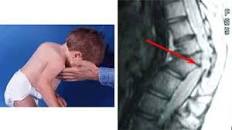
Symptoms
Kyphosis symptoms vary depending on the severity and cause of the curve. Symptoms can include:
- Rounded shoulders
- A visible hump on the back
- Mild back pain
- Fatigue
- Spine stiffness
- Tight hamstrings (the muscles in the back of the thigh)
Long-term progression of severe curves may lead to:
- Weakness, numbness, or tingling in the legs
- Loss of sensation
- Changes in bowel or bladder habits
- Shortness of breath or other breathing difficulties
Doctor Examination
Mild kyphosis may not be acknowledged until a scoliosis screening at school or a regular check-up prompts a doctor's visit. However, it often concerns parents and children alike when there are noticeable changes in the child's back. The worry about the cosmetic appearance of the child's back generally leads families to seek medical help.
Physical Examination
It's necessary to take a medical history and ask about the child's general health and symptoms. The doctor then examines the child's back, pressing on the spine to determine if there are any tender areas.
The doctor will ask the child to bend forward with both feet together, knees straight, and arms hanging naturally during the exam. In this procedure called the Adam's forward bend test, the doctor can better observe the slope of the spine and any spinal deformity.
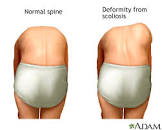
If the curve is flexible and correctable, the doctor may also ask the child to lie down.
Tests
- X-rays. Images of dense structures, such as bones, are provided by X-rays. Your doctor may get X-rays from different angles to see if there are changes in the vertebrae or other bone defects.
- Pulmonary function tests. If the curve is severe, the doctor may recommend pulmonary function tests to determine if the child's breathing is restricted due to diminished chest space.
- Other tests. Progressive curves in patients with congenital kyphosis may result in spinal cord compression symptoms, such as pain, tingling, numbness, or weakness in the lower body. If the child experiences any of these symptoms or if the curve progresses quickly, the doctor may recommend neurologic tests or magnetic resonance imaging (MRI) scans.
Treatment
The aim of treatment is to stop curve progression and prevent deformity. Your doctor will consider the child's age, health, remaining growth years, kyphosis type, and curve severity when deciding how to treat kyphosis.
Nonsurgical Treatment
Nonsurgical treatment is appropriate for patients with postural kyphosis and recommended for patients with Scheuermann's kyphosis whose curves are less than 70 to 75 degrees.
Treatment may include:
- Observation. The doctor may recommend observation to monitor the curve and ensure progression doesn't occur. The child may be asked to return for periodic visits and X-rays until continuous growth.
- Physical therapy. Specific exercises can help relieve back pain and improve posture by strengthening the abdomen and back muscles. Certain exercises help stretch tight hamstrings and strengthen areas of the body that may be impacted by spine misalignment.
- Nonsteroidal anti-inflammatory drugs (NSAIDs). NSAIDs, such as aspirin, ibuprofen, and naproxen, can help mitigate back pain.
- Bracing. Bracing may be prescribed for patients with Scheuermann's kyphosis who are still growing. The brace type and the wearing period each day will depend on the severity of the curve. The brace will be adjusted regularly as the curve improves. Typically, the child wears the brace until skeletal maturity is reached.
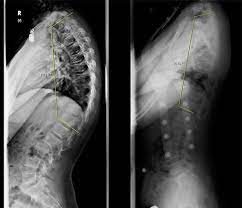
Surgical Treatment
Typically, surgical treatment is recommended for patients with congenital kyphosis.
Surgery may also be recommended for patients with Scheuermann's kyphosis whose curves exceed 70 to 75 degrees or those with severe back pain. Individuals with kyphosis in the lower back (thoracolumbar curves) may require surgery for smaller curves exceeding 25 to 30 degrees.
Spinal fusion is the most common surgical procedure used to treat kyphosis.
The procedure aims to:
- Reduce curve degree
- Prevent further curve progression
- Maintain improvement over time
- Alleviate significant back pain
The surgery's basic idea is to fuse together the impacted vertebrae to heal into a single, solid bone. Eliminating movement between the affected vertebrae through fusion can reduce the curve degree and help alleviate back pain. As a result, metal screws and rods are commonly used during the procedure to position better the vertebrae.
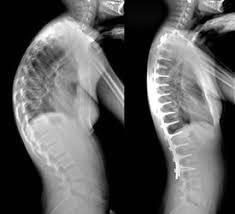
Prevention
There is no surefire way to prevent kyphosis, but there are steps you can take to minimize your risk of developing the condition.
Some of the things you can do include:
- Maintain proper posture while sitting, standing, and walking.
- Perform exercises that help strengthen the back and core muscles.
- Avoid carrying heavy backpacks or bags that cause strain on the back and shoulders.
- Take periodic breaks from sitting or standing for prolonged periods to stretch and move around.
- Get regular check-ups and screenings during adolescence to detect any abnormalities early on.
Conclusion
Kyphosis is a spinal disorder that involves an excessive curvature of the upper back. While it's often not a cause for concern, severe cases can lead to significant spinal deformity, pain, and breathing difficulties. Treatment options vary depending on the type and severity of the condition, but most cases can be managed through nonsurgical methods such as physical therapy and bracing. If surgery is necessary, spinal fusion is the most common procedure used to reduce the curve degree and alleviate pain. Taking preventive measures such as practicing good posture and exercising regularly can help minimize your risk of developing kyphosis.

